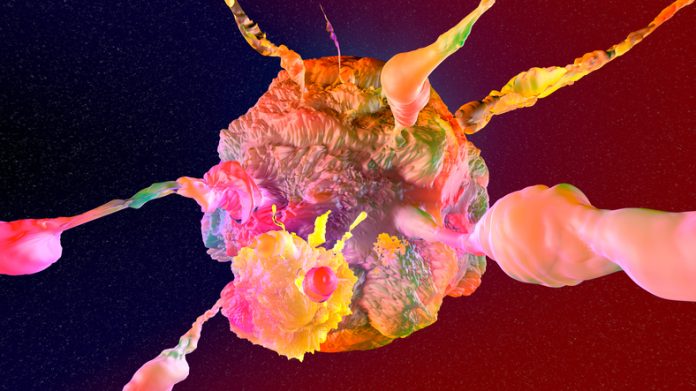
Scientists say they have developed a new framework that can combine three existing methods of finding structural variants (SVs) within cancer cell DNA to learn more about how those cancers begin. The team published its study (“Integrative detection and analysis of structural variation in cancer genomes”) in Nature Genetics.
“SVs can contribute to oncogenesis through a variety of mechanisms. Despite their importance, the identification of SVs in cancer genomes remains challenging. Here, we present a framework that integrates optical mapping, high-throughput chromosome conformation capture (Hi-C), and whole-genome sequencing to systematically detect SVs in a variety of normal or cancer samples and cell lines. We identify the unique strengths of each method and demonstrate that only integrative approaches can comprehensively identify SVs in the genome,” write the investigators.
“By combining Hi-C and optical mapping, we resolve complex SVs and phase multiple SV events to a single haplotype. Furthermore, we observe widespread structural variation events affecting the functions of noncoding sequences, including the deletion of distal regulatory sequences, alteration of DNA replication timing, and the creation of novel three-dimensional chromatin structural domains. Our results indicate that noncoding SVs may be underappreciated mutational drivers in cancer genomes.”
“We were able to design and use this computational framework to connect the three methods together, to get the most comprehensive view of the genome,” said Feng Yue, Ph.D., assistant professor of biochemistry and molecular biology at the Penn State College of Medicine. “Each method by itself can only review a portion of the structural variations, but when you integrate the results of the three different methods, you can get the most comprehensive view of the cancer genome.”
Using their new method, the researchers were able to find structural variations for over 30 types of cancer cells. The team of scientists was also able to use the same methods to begin to learn why certain classes of structural variants may be contributing to cancers.
“Many of the structural variants that are found in human cancers do not appear to directly impact a gene,” explained Jesse Dixon, M.D., Ph.D., a fellow at the Salk Institute in San Diego, and one of the co-authors of the work. “Instead, many structural variants appear in noncoding portions of the genome, what people have historically referred to as junk DNA, and it can be a bit of a mystery as to why these may be contributing to cancer.”
What the researchers were able to observe is that some structural variants appear to affect regulatory gene switches in noncoding sequences of DNA. Defective switches prevent appropriate turning on or off of specific genes and this can contribute to cancer.
“With many cancers, the gene itself is OK but the 'switch' that controls it is what's causing problems,” noted Yue. “Using our approach, it's possible that we could find out that the switch was broken and find a cure based on the specific target for that switch. If it's switched off, for example, maybe we could use gene editing technology to turn it back on.”
They also used the Hi-C method to explore how structural variations can affect 3D genome structure.
“Cells are small, but their DNA is very long. Laid out in a line, all the DNA from one cell would be more than two meters long,” said Job Dekker, Ph.D., professor and co-director of the program in Systems Biology at University of Massachusetts, investigator of the Howard Hughes Medical Institute, and a senior author of the paper. “That's why DNA needs to fold in intricate ways. We have found that genomic alterations in cancer cells can lead to differences in how the genome folds and this can lead to cases where genes become turned on or off by the wrong regulatory switches.”
The team of scientists was able to discover that SVs impact genome folding in cancer cells, and that these changes may be contributing to the cancer.
“One of the discoveries we had made in the past is that our genome is folded up into distinct structures, almost like little neighborhoods,” Dixon said. “It appears as though some SVs cause changes to these neighborhoods, such that a cancer-causing gene is moved from a neighborhood where the gene is kept quiet into one where the gene becomes activated.”
In the future, Yue and his research team plan to apply the new method in more cancer patients and they are working closely with the Penn State Institute for Personalized Medicine. The scientists suggest that this work could lead to a better ability to predict which structural variants may contribute to cancer, and which genes they may be targeting.
“If we can understand which mutations are driving which genes, this has the potential to suggest that the cancer would be susceptible to treatment by particular drugs that target those genes,” according to Yue. “Such an approach has been really challenging in the past for noncoding structural mutations in the genome.”






![AI Algorithm Could Reduce Breast Cancer Mammogram False Positive Rate The primary goal of the Paradigm Registry is to accelerate tumor profiling based on disease biology. [iStock/LilliDay]](https://www.insideprecisionmedicine.com/wp-content/uploads/2019/01/307-218x150.jpeg)






